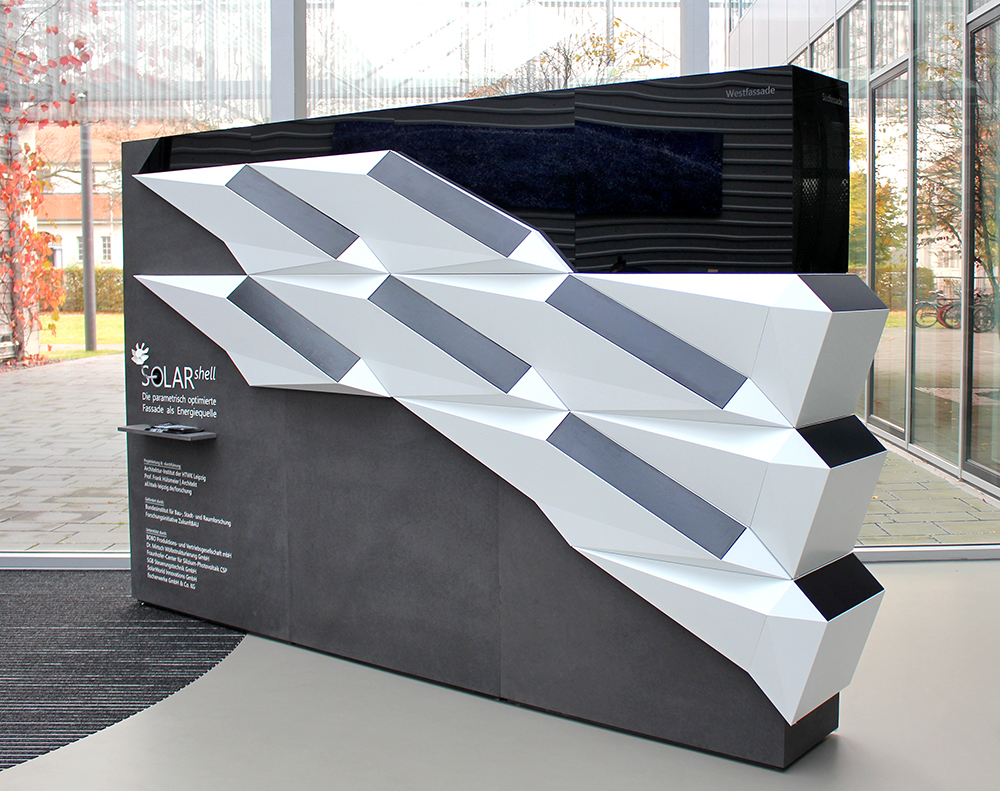Scientists present a particularly efficient design solar façade
Aesthetic and efficient at the same time: The outstanding design of the “SOLAR.shell” solar façade developed by architects from the Leipzig University of Applied Sciences (HTWK Leipzig) and scientists from Fraunhofer CSP means that it generates up to 50 percent more solar power than conventionally installed solar modules – and it looks good too.

The trick: The solar modules in the rib-like façade are all positioned to be exposed to as much sunlight as possible on the respective building over the course of the year. A scaled down version of the “SOLAR.shell” will be exhibited to the public from 30th November to 20th December 2017 in HTWK Leipzig (Nieper-Bau, Karl-Liebknecht-Straße 134, 04277 Leipzig). The generated power can be used directly on location using a USB cable, such as for charging a mobile phone.
The energy balance of a building can be significantly improved using solar modules on the roof. However, it is hardly possible to cover the full energy needs of a building by using the available roof area alone. The façade on buildings could offer more space. This solution is, however, rarely implemented because of aesthetic reasons and due to the low solar yield on vertical surfaces. HTWK professor Frank Hülsmeier and his team from the Architecture Institute Leipzig (ai:L) together with partners have therefore developed the “SOLAR.shell”, which impresses both technically and architecturally. “We initially designed a three-dimensionally folded façade based on aesthetic aspects and then modelled it on the computer. The draft was then technically optimised in the next step. We included the course of the sun in the daily and yearly cycle as well as the height of the surrounding building in a specific location – a street in Berlin in this case – in the draft model and optimised the angles of the solar modules”, says Hülsmeier. “This means that we have managed to generate up to 50 percent more energy with the same surface area of solar modules than from vertically installed solar modules”. The optimum south, west or east façade for any location can be designed with the aid of this “parametric-generative” method.
A scaled down section of the “SOLAR.shell” façade is now being exhibited in a scale of 1:2 in the Nieper-Bau at HTWK Leipzig. A total of nine solar modules are embedded in the 2 x 3 metre demonstrator made from aluminium composite panels. This takes sunlight and artificial light directly on location to produce electricity, which can be used via an integrated USB connection.
The development of the SOLAR.shell was funded by the federal programme “Zukunft Bau”. The implementation of the demonstrator was supported by BOBO GmbH, SGB Steuerungstechnik GmbH and the Fraunhofer Center for Silicon Photovoltaic CSP, which produced the necessary special PV modules and presented the demonstrator to the public for the first time as part of the international photovoltaic conference “PV-Days” at Fraunhofer CSP in Halle (Saale).